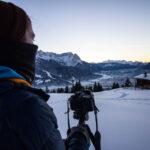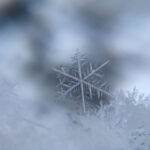Have you ever imagined what it was like to take photos during the Civil War era? You had a huge camera with no shutter, no aperture control, and you had to have an array of chemicals just to make a single image. Not to mention your subjects had to stand still for several seconds while the image exposed. If you’ve ever wondered how the whole process works, take a look at this tutorial on how to create a tintype image with Civil War era technology:
How to Create a Tintype Image:
- Cover Plate in Collodian – The first step is to cover the glass plate in collodian which is a special chemical. This can be done in bright light.
- Submerse in Silver Nitrate Bath – The silver nitrate is another chemical solution that is used to make the plate light sensitive.
- Insert into a Plate Holder – Once the plate is removed from the silver nitrate bath it is very sensitive to light so a light tight plate holder must be used to transport the plate to the camera.
- Attach Plate Holder to Camera – The plate holder attaches to the camera and holds the plate in place while the image is being exposed.
- Remove Dark Slide – The dark slide reveals the plate inside the camera so that the image is ready to be made.
- Remove Lens Cap – Removing the lens cap is equivalent to pressing the shutter button. There is no aperture, and the shutter speed is simply how long you leave the lens cap off, which will typically be several seconds.
- Replace Lens Cap and Dark Slide, and Remove Plate Holder – Putting the lens cap back on ends your exposure. Putting the dark slide back in makes your plate holder light tight again. Now you may remove the plate holder from the camera and take it to the dark room.
- Place Plate in Bin and Add Developer – In a dark room, or room with a special red light, you may remove the plate from the holder and place it into a bin with the right developer chemicals. The image will sit in the bin for several seconds before it needs to be stopped.
- Use Water to Stop Development – Once the darkest details start to show, stop the development by adding water and rinsing the plate.
- Fix the Image – Using another bin and fixing chemicals, fix the image so that the image will keep its proper exposure. This can be done in light.
- Let the Image Dry – The image must dry for a while. It is fragile during this state so caution must be taken.
- Add Varnish – Without varnish, the image is very fragile and can easily be scratched and permanently marked on. The varnish not only protects the image, but creates a more pleasing contrast and glossy look.

Tintype created with Civil War era chemicals and technology
Like This Article?
Don't Miss The Next One!
Join over 100,000 photographers of all experience levels who receive our free photography tips and articles to stay current:






What type of camera are you specifically using for this video?
This step by step list and video to go along with it was so helpful.
Are there any other models of cameras you suggest for this?
Thank You!